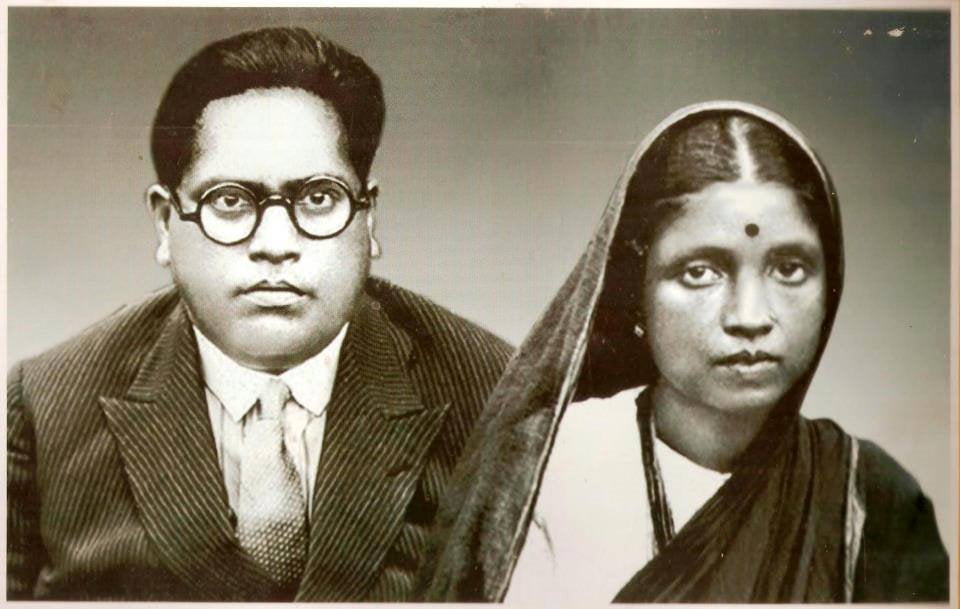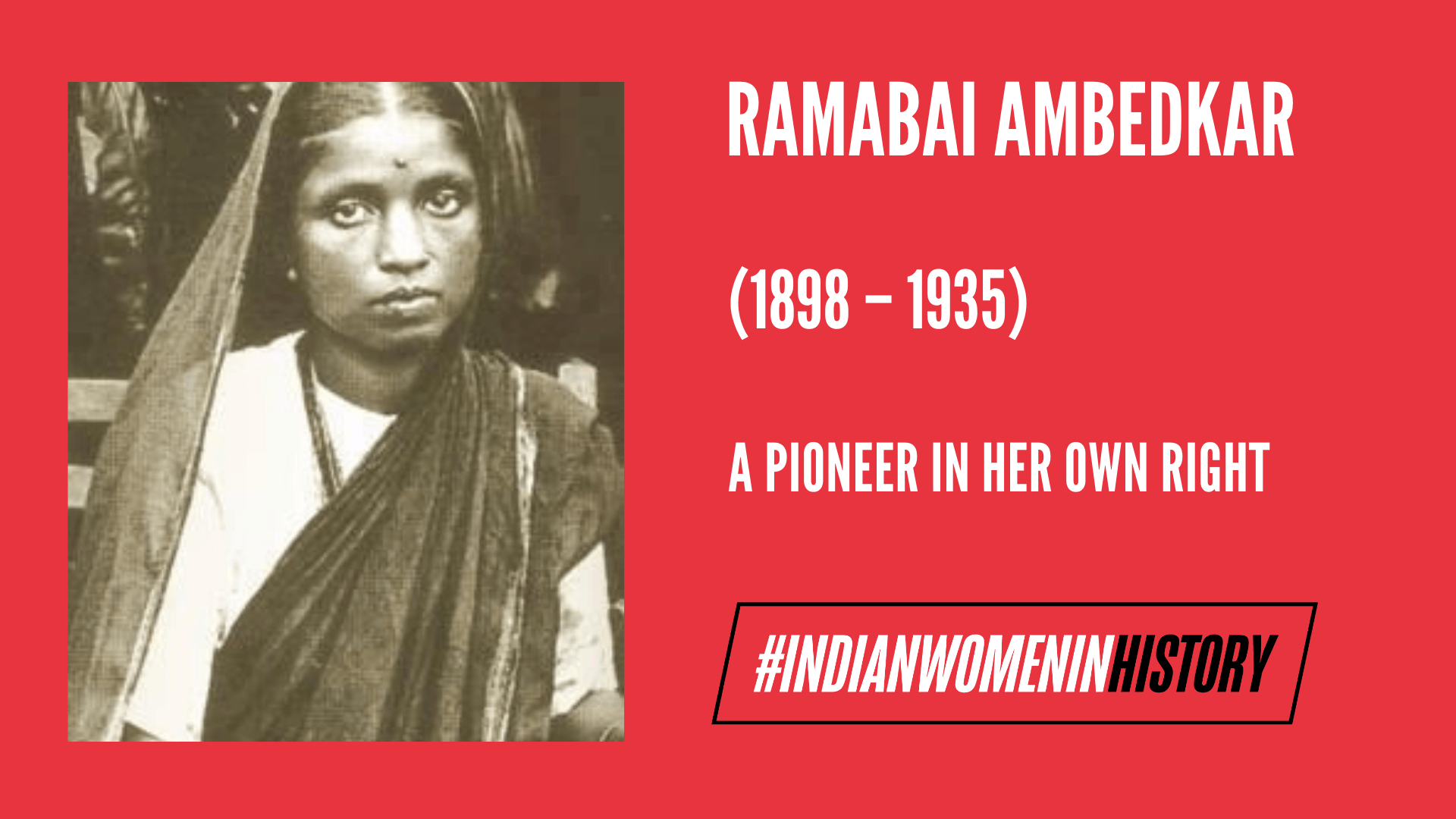Ramabai Bhimrao Ambedkar has been one of the greatest inspirations for the doyen of social justice, Dr. Bhimrao Ambedkar. Little has been written about her apart from movies made on her mainly in Kannada and Marathi. In times like today, it is crucial to shed the deserved light on women who have been essential in inspiring men that we hail today. She is fondly remembered today as Ramai or Mother Rama. Ramabai Ambedkar is one of those women who silently stood resolute in rendering support to the architect of our Constitution, while she was a symbol of humility, resilience and compassion.

Early Life
Ramabai Ambedkar was born on 7th February, 1898. She came from a humble background and was the second daughter of Bhiku Datre Valangkar and Rukmini. Her father is said to have been a labourer who earned his livelihood by carrying baskets of fish from Dabhol harbour to the market. Ramabai along with her three siblings Gorabai, Meerabai and Shankar lived in Mahapura locality, in Walang village near Dabhol. They lost their mother in childhood followed by their father Bhiku, a few years later. The siblings were finally brought up by their uncles Valangkar and Govindpurkar in erstwhile Bombay.
her steadfast nature helped her overcome those difficulties. She held her head high amidst the social injustices and atrocities that occurred and was a source of support and motivation to Dr. Ambedkar while fighting along with him to uplift the oppressed.
Personal Life
It was in Bombay where she finally met and married Dr. Bhimrao Amedkar in 1906 at a simple ceremony held in the Byculla Market. Both of them at the time of marriage were very young. Dr. Bhimrao Ambedkar was a teenager while Ramabai was just nine years old. It has been written that, the night of marriage the bridegroom and his family were lodged in an open spacious corner while the bride’s family was lodged at the other corner.
Also read: On Babasaheb’s Birth Anniversary: 13 Feminist Principles of Dr. B R Ambedkar
Dr. Ambedkar used to affectionately call her Ramu while she in return called him, Saheb. Despite differences in their educational qualification this was a marital bond of respect and equality which we see being embraced in Dr. Ambedkar’s public life as well. They were blessed with four sons Yashwant, Gangadhar, Ramesh and Rajratna and one daughter, Indu. However, only one son Yashwant Ambedkar survived to adulthood while the other four children died in infancy.
Pillar of Inspiration
While narrating the histories and great deeds of great men we must give due credit and pay our homage to those who have humbly been a pillar of strength and inspiration to them. The life of Dr. Ambedkar would not have turned the way we remember today had it not been for Ramabai Amedkar. We must remember her grit and determination while Dr. Ambedkar was pursuing his doctoral degrees abroad, Ramabai was living alone in erstwhile British India under abject poverty. The degrees that Dr. Ambedkar earned reflect the immense sacrifices that Ramabai made at home. Despite others suggesting Ramabai to stop her husband from leaving for America, it was her utmost trust in Dr. Ambedkar that desisted their comments and suggestions while supporting him to pursue his education abroad.
Despite others suggesting Ramabai to stop her husband from leaving for America, it was her utmost trust in Dr. Ambedkar that desisted their comments and suggestions while supporting him to pursue his education abroad.
Ramabai Ambedkar could foresee how essential it was for him to earn his education outside India from erudite universities to help serve people back home and uplift the systemic discrimination they faced for centuries. Although Ramabai did not receive any formal education, it did not hinder her from understanding the plight of the downtrodden and also the injustices that took place. Ramabai Ambedkar teaches us not only humility but reiterates the virtue of perseverance and resilience even at the face of hardships.
Dedication to Ramabai, Ambedkar’s “Thoughts on Pakistan”
Dr. Bhimrao Ambedkar’s book, ‘Thoughts on Pakistan‘ was published in 1941, after the death of his beloved Ramu. He states that it is a token of appreciation to Ramabai’s “goodness of heart, her nobility of mind and her purity of character and also for the cool fortitude and readiness to suffer” along with Ambedkar in the unfortunate times they faced and the worries that befell upon them.

It was Ramabai’s long standing wish to visit Pandharpur for pilgrimage but because they belonged to the Dalit caste, they were not allowed to go inside the temple. This led Dr. Ambedkar to promise his wife to create a new Pandharpur for her which finally led him to abandon Hinduism and embrace Buddhism. Ramabai Ambedkar died on 27th May, 1935 after prolonged illness at her residence.
Ramabai suffered hardships from a very young age following the death of her mother. However, her steadfast nature helped her overcome those difficulties. She held her head high amidst the social injustices and atrocities that occurred and was a source of support and motivation to Dr. Ambedkar while fighting along with him to uplift the oppressed.
Also read: Why Ambedkar Matters To The Women’s Rights Movement
About the author(s)
Nangsel ardently believes in engaging with discourses and debates that have been obscured and marginalised due to various structures of power and privileges. Her main areas of interest lie in gender, refugees, forced migration and minority rights.





Hi buddies, it is great written piece entirely defined, continue the good work constantly.